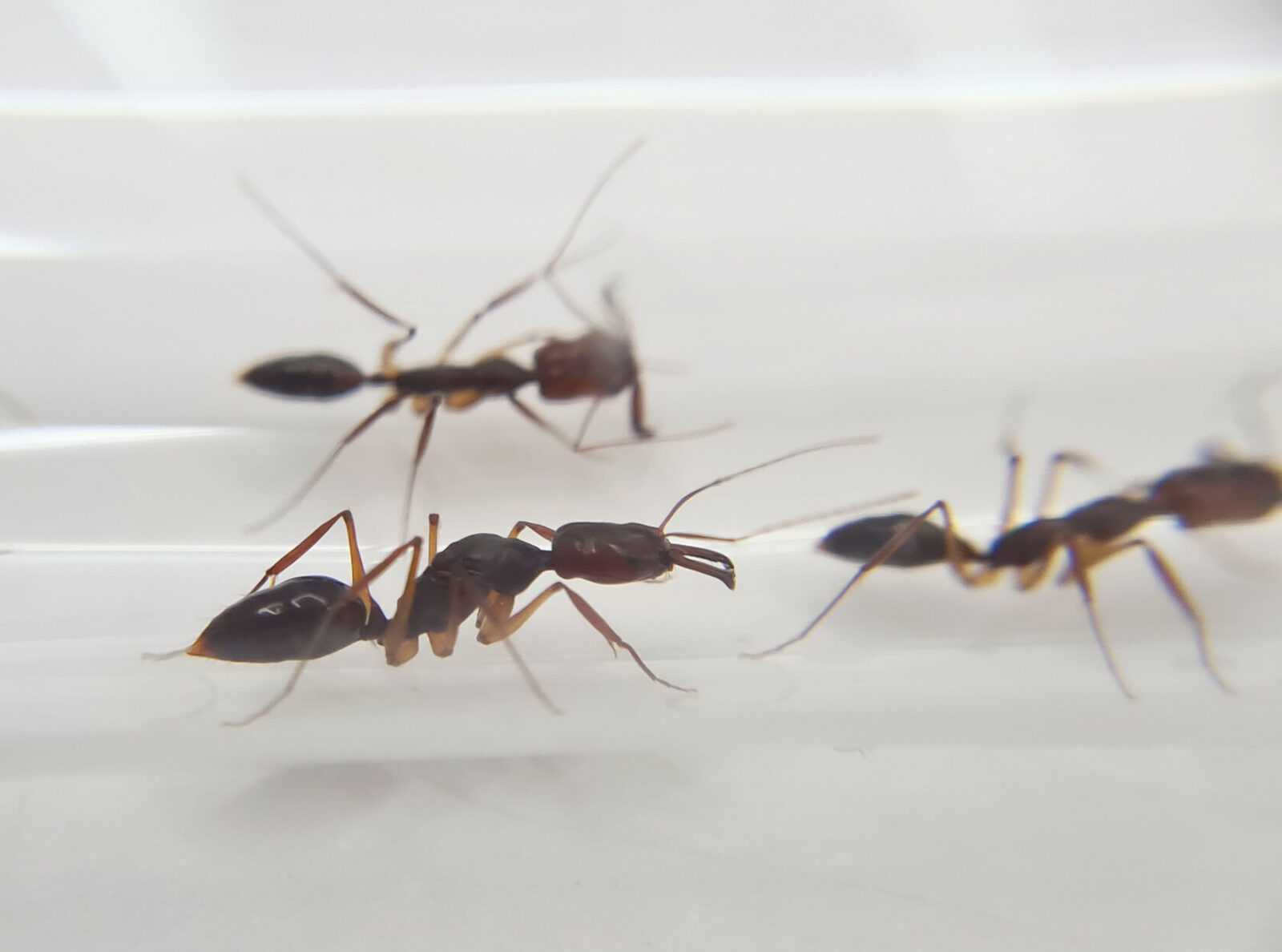Odontomachus rixosus
Welcome to the intriguing world of Odontomachus rixosus, a fascinating species of ants known for their unique characteristics and impressive abilities. In this product description, we will delve deeper into the details of these incredible ants, providing you with all the information you need to know.
Colony Type
Odontomachus rixosus belongs to the polygyny colony type, meaning they have multiple queens in their colonies. This distinctive characteristic sets them apart from other ant species and plays a significant role in their social structure and behavior.
Colony Size
These ants have the potential to grow their colonies to a staggering size of up to 200 workers. With such a large number, they are able to accomplish remarkable feats in their surrounding environment.
Development Rate
Odontomachus rixosus exhibits a medium development rate. This means that their growth and maturation processes are neither too fast nor too slow. It strikes a perfect balance, allowing for steady progression in their colonies.
Size
The queen of Odontomachus rixosus measures between 11-13 mm, making her slightly larger than the workers. The workers, on the other hand, reach a size of 10-12 mm. These dimensions give these ants just the right physical attributes to fulfill their respective roles within the colony.
Color
When it comes to coloration, Odontomachus rixosus displays a **head that is slightly red**, while their body has a brown hue. This combination creates a visually appealing contrast, making them truly captivating to observe.
Nutrition
Odontomachus rixosus follows a diverse diet to meet their nutritional needs. They primarily feed on *food insects like cockroaches and crickets*, which provide them with essential proteins. Additionally, they also indulge in sweet fruits, further diversifying their nutritional intake.
Humidity and Temperature
A controlled humidity and temperature environment are crucial for the well-being of Odontomachus rixosus. In the *arena area*, a humidity level of 60-70% is recommended, ensuring the ants have the ideal conditions for their daily activities. In the *nest*, the humidity should be slightly higher, ranging from 60-80%. Similarly, the temperature in the *arena area* should be maintained at 21-30 °C, while the *nest* should provide a slightly warmer temperature between 24-28 °C.
Special Features
One of the striking features of Odontomachus rixosus is their sting. This defense mechanism allows them to protect themselves and their colony. However, their uniqueness doesn’t stop there. These ants possess fast jaws that can open up to an impressive 180 degrees. This extraordinary ability enables them to capture and immobilize their prey effectively, ensuring it doesn’t escape.
Recommended Nests for Breeding
When it comes to breeding Odontomachus rixosus, it is crucial to provide them with suitable nesting options. Recommended materials for their nests include acrylic, cork, plaster, and aerated concrete. These nesting materials offer the ants a secure and comfortable environment, enabling them to thrive and grow.
Odontomachus rixosus is an ant species that embodies uniqueness and adaptability. Their polygyny colony type, impressive size, and distinctive features make them an intriguing choice for ant enthusiasts. With the right knowledge and understanding of their needs, you can create an ideal habitat for these ants, allowing you to witness their extraordinary behaviors and marvel at their exceptional abilities.



















Reviews
There are no reviews yet.